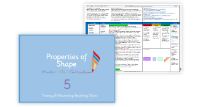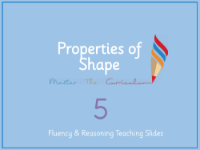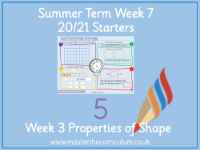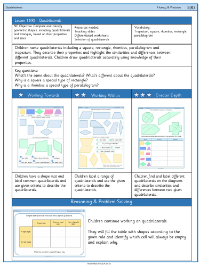Properties of Shape - Quadrilaterals - Planning
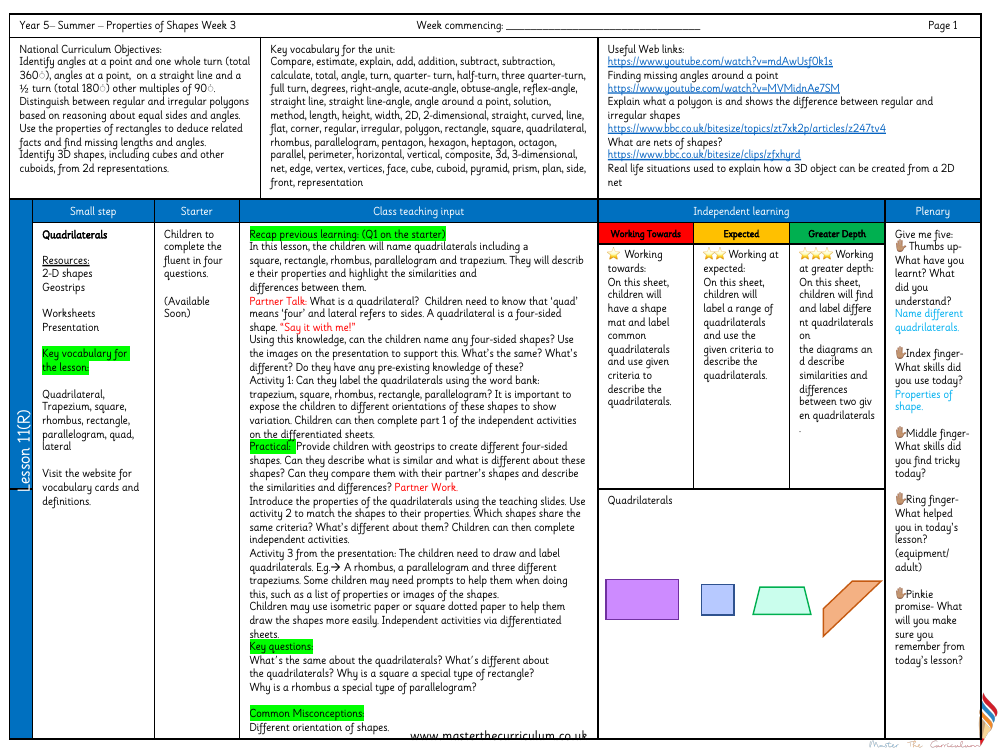
Maths Resource Description
In the third week of the Summer term, the Year 5 curriculum on Properties of Shapes turns its attention to quadrilaterals. This particular lesson aims to deepen students' understanding of the National Curriculum objectives by identifying and distinguishing between various quadrilaterals, such as squares, rectangles, rhombuses, parallelograms, and trapeziums. The children will explore angles, polygons, and 3D shapes through a variety of resources including 2D shapes, geostrips, worksheets, and a presentation. Key vocabulary such as 'quadrilateral', 'trapezium', and 'parallelogram' is introduced, with an emphasis on the properties that define these shapes, including their sides and angles. The lesson begins with a starter activity that recaps previous learning and encourages partner discussions to clarify what a quadrilateral is, followed by activities that involve labelling and comparing quadrilaterals.
During the class, practical exercises with geostrips allow students to create and investigate different four-sided shapes, discussing their similarities and differences. The teaching slides introduce the specific properties of each quadrilateral, and further activities challenge the students to match shapes to their correct properties. For independent learning, the children are tasked with drawing and labelling quadrilaterals using isometric or square dotted paper to aid their representations. The lesson concludes with a plenary that addresses common misconceptions and reinforces key learning points, such as the special relationships between squares, rectangles, and rhombuses. Differentiated activities are provided to cater to varying levels of understanding, from working towards the expected level to achieving greater depth in recognising and describing quadrilaterals.

